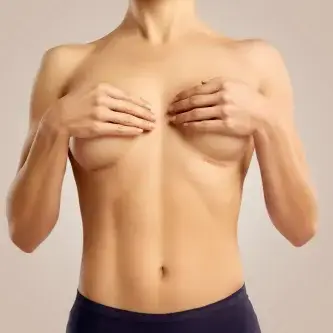Remove scars: Achieve flawless skin
From 450€
Intervention time
2 hours
Visible effects
2 moths
Recovery
3 days
We are not franchises
We have our own medical team
What is the treatment to remove scars?
Scars are marks on the skin that form after an injury, surgery, burn, or skin condition such as acne. While they are part of the natural healing process, many people seek to eliminate or reduce their appearance to improve aesthetics and regain their confidence. Today, there are various treatments to remove scars, ranging from medical procedures to minimally invasive options that help regenerate the skin and improve its texture.
How is the scar removal procedure performed?
This surgery is performed under local anesthesia and consists of a combination of procedures that typically involve the resection of the previous scar and tension-free sutures. Hospitalization is not required, and it is essential to follow the postoperative measures recommended by Bloome by EGOS to facilitate targeted healing. These can occur in two forms:
Keloid
This type of scar proliferates in a pseudotumoral manner, extending and thickening beyond the initial wound. It may continue to grow after the wound has closed, and the main risk factors for this type of scar are due to genetic components such as race, the anatomical area where it occurs, or age.
Hypertrophic
This is characterized by excessive scar proliferation that extends beyond the initial wound. Wounds that have suffered infection are more likely to develop hypertrophic scars. Some large hypertrophic scars may appear similar to keloids, and the way to differentiate them is that a hypertrophic scar is limited to the original edges of the wound, while a keloid extends beyond the edges of the original lesion.

Ideal patient for scar removal
The ideal patient for scar removal is one who meets certain criteria that make them a good candidate for the procedure. Although each case is unique and should be evaluated individually by a plastic surgeon, some common attributes of the ideal patient include:
- Stable scars: Patients with stable scars, which have gone through the natural healing process and do not show signs of active inflammation or recent changes in the scar, are good candidates.
- General health: A patient in good general health is ideal to minimize the risks associated with surgery. This means having a stable medical condition and not having significant contraindications.
- Non-smoker or willing to quit smoking: Tobacco can negatively affect healing. A non-smoker or a patient willing to quit smoking before and after the procedure may achieve better results.
- Commitment to postoperative care: Scar removal often requires specific postoperative care, such as the use of creams or dressings. The ideal patient is committed to following the surgeon’s instructions to optimize results.
- Scars affecting functionality or aesthetics: The ideal patient is one whose scars affect functionality or aesthetics, justifying the surgical intervention to improve appearance or mobility.
- Individualized evaluation: Individualized evaluation by a plastic surgeon is key. Every patient has unique needs, and determining suitability will be based on a detailed assessment of the specific scar and the patient's characteristics.
It is essential that the ideal patient actively participates in the process, sharing their expectations and concerns with the plastic surgeon, and following the recommendations before and after the procedure to optimize results and recovery.
Pre-treatment for scar removal
Preoperative scar removal is a crucial step that requires careful planning and preparation before the surgery. It begins with a detailed consultation with a plastic surgeon at Bloome by EGOS, during which the nature of the scar will be assessed. A thorough medical history will be taken to identify any potential contraindications, and any necessary medical tests may be conducted. During this stage, specific recommendations are made, including things like quitting smoking, suspending certain medications, and following skincare guidelines, which can help accelerate healing. The preoperative phase is important to ensure that the patient is in optimal condition for surgery and to lay a solid foundation for maximizing the chances of achieving satisfactory aesthetic and functional results.

Post-treatment for scar removal
After the procedure, the medical team will provide a series of recommendations. The sutures that were made will be removed between three and seven days after the intervention. It will be necessary to avoid exposing the scar to sunlight for at least a prolonged period, as determined by the doctor. Additionally, the use of sunscreen is recommended to prevent pigmentation.
Improves the appearance of the skin
Reduces the visibility of scars
Evens out the skin tone
Boosts self-confidence
What is the price of scar removal?
The price of scar removal can vary significantly depending on several factors, from the type of scar to the technique used for its treatment. In general, the costs for scar removal range from €450 to €1,500 per session, although this range may change depending on the individual needs and conditions of each patient.
Factors that affect the price of scar removal:
- Type of scar: The type of scar (atrophic, hypertrophic, keloid, or post-surgical) directly influences the required treatment. More complex or larger scars may require more advanced techniques or multiple sessions, which increases the total price.
- Location of the scar: The location can also influence the cost. Scars in hard-to-reach areas or with more delicate skin may require a more specific or delicate treatment, which can raise the price.
- Treatment method: There are several methods to remove scars, such as laser, microneedling, cosmetic surgery, or steroid injections. Each of these treatments has a different price, depending on the complexity and technology used. Fractional laser, for example, tends to be more expensive than treatments with creams or injections.
- Number of sessions required: In some cases, multiple sessions are necessary to achieve optimal results. The total price will depend on how many sessions are required to effectively treat the scar.
- Experience of the professional: Costs can also vary depending on the experience and reputation of the specialist or clinic. Professionals with more experience or those using advanced technology may charge higher rates.
- Geographic location: The price can also be affected by the location of the clinic. In larger cities or areas with higher demand for aesthetic treatments, prices may be higher.

Where can I have scar removal?
At Bloome by EGOS, we offer scar removal procedures at several of our locations, so you can access the treatment you are looking for in a convenient and nearby setting.
Frequently asked questions about scar removal
When will I be able to return to normal life?
It will depend on the area that was treated. It is recommended to avoid unnecessary efforts that could affect the new scar.
Will I be prescribed any medication?
If the medical team deems it necessary, they will prescribe medication, such as antibiotics or anti-inflammatories, depending on the type and area treated.
What are the risks associated with scar removal treatments?
The risks associated with treatments for scar removal include:
- Infection: As with any procedure, there is a risk of infection in the treated area if proper postoperative care is not followed.
- Abnormal healing: It is possible that the scar may not heal as expected, forming hypertrophic or keloid scars, which are thicker and more prominent.
- Changes in pigmentation: The treated area may become lighter or darker than the surrounding skin, especially in people with darker skin tones.
- Skin sensitivity: After the treatment, the skin may temporarily become more sensitive or numb.
- Inflammation or swelling: Inflammation is common and generally temporary, but it may take some time to completely subside.
- Asymmetry: Results are not always perfectly symmetrical, which could affect the final appearance.
- Allergic reaction: There is a possibility that the body may have an adverse reaction to certain products or procedures used during the treatment.
Can scars be completely removed?
No treatment guarantees the complete removal of a scar, but scars can be significantly reduced to the point of becoming almost imperceptible.

Our team for scar removal

Dr. Álvaro Chaux
Each scar is unique, just like each patient, and that’s why I make sure to thoroughly evaluate each case to offer the most appropriate treatment. I use the most advanced and minimally invasive techniques in aesthetic medicine, such as the combination of state-of-the-art lasers, chemical peels, and microneedling, which significantly improve the appearance of scars, reducing their visibility without compromising the health of the surrounding skin.
More information about Dr. Álvaro Chaux
Dra. María Costa
For me, removing scars means restoring skin harmony and uniformity with respect for its history. I use combined techniques of excision, precise suturing, and regeneration to soften marks and promote a more natural aesthetic healing.
More information about Dra. María Costa
Dra. Carla Corberó
In my approach, scar removal goes beyond erasing what’s visible: I aim to regenerate the skin from within. I combine surgical procedures with remodeling therapies so the skin recovers its natural texture, tone, and softness.
More information about Dra. Carla Corberó
Dra. Ruiz
I view scar removal as an act of aesthetic reconstruction: making the past no longer define the skin. My objective is to integrate interventions with subtlety, align contours, and foster a more uniform appearance without losing the skin’s identity.
More information about Dra. RuizOur patients say about EGOS
Average rating: 4.9 / 5

